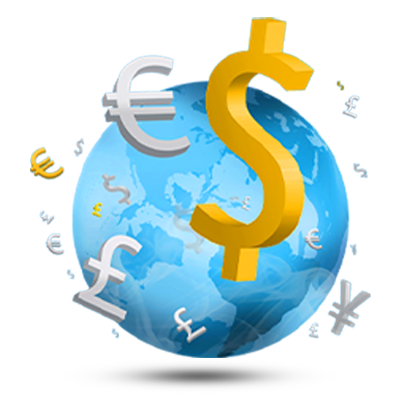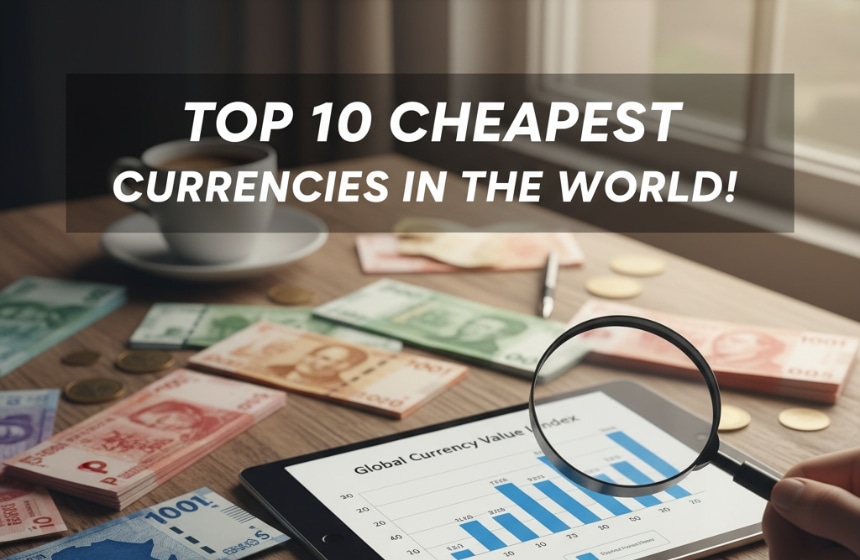Few hold as much magic as currency in a world obsessed with numbers. Currencies are more than just units of exchange; they represent a nation’s economic health, its standing in the world, and even a glimpse into its culture. Yet, at the bottom of the foreign exchange totem pole lie the “cheap” currencies. These are the rials, dongs, and leones, the underdogs with exchange rates that make headlines and raise eyebrows. But what exactly makes a currency “cheap,” and what forces propel some into this bargain bin of the financial world?
The label “cheap” is primarily a comparison relative to stronger currencies. It indicates a low exchange rate, meaning it takes many units of the “cheap” currency to buy one unit of a stronger currency, like the US dollar. For instance, one US dollar fetches over 42,000 Iranian rials, making the Rial one of the world’s cheapest.
Why are some currencies so weak?
Internal factors like economic stability play a crucial role. High inflation, large government deficits, and reliance on imports can all devalue a currency. Inflation erodes its purchasing power, making it take more units to buy the same goods. Deficits create an oversupply of the currency, pushing its value down. Reliance on imports, especially vital commodities like oil, leaves economies vulnerable to external price fluctuations, leading to further devaluation.
External factors can also be powerful drivers. Global economic recessions or instability in key trading partners can dampen demand for a country’s exports, impacting its currency. Foreign investment plays a critical role, too. Countries with political instability or weak legal systems often struggle to attract foreign investment, which limits the inflow of foreign currency and weakens the local currency. Additionally, international sanctions, like those currently imposed on Iran, can severely curtail trade and access to financial markets, further crippling the currency.
A Closer Look at the Cheapest Currencies!
Iranian Rial (IRR): The current king of cheapness, with a staggering exchange rate of over 500 IRR to 1 USD. High inflation due to sanctions and economic mismanagement is the primary culprit. This has a harsh impact on Iranians, making necessities unaffordable.
Vietnamese Dong (VND): While not as drastically low as the Rial, the Dong has experienced significant devaluation. Vietnam’s transition to a market economy has challenges, and dependence on tourism and foreign investment makes it vulnerable to external shocks. However, Vietnam boasts impressive economic growth, which could stabilize the Dong in the long run.
Lao/Laotian Kip (LAK): Surprisingly, the Kip hasn’t experienced significant devaluation. Its low value is more a reflection of Laos’s developing economy. Interestingly, the Kip has appreciated over time against some stronger currencies. However, poverty and reliance on foreign aid remain challenges for Laos.
Sierra Leonean Leone (SLL): This currency has suffered from political instability, corruption, and poverty. High inflation and reliance on resource exports leave it vulnerable to global price fluctuations. The good news is that recent economic reforms aim to improve stability and attract investment.
Indonesian Rupiah (IDR): The value of the Rupiah has fluctuated in recent years due to factors like commodity prices and global trade uncertainties. However, Indonesia’s growing economy gives the Rupiah potential for future stability. Its sizeable tourism industry also provides a source of foreign currency inflow.
Uzbekistani Som (UZS): Despite recent economic reforms, the Som remains relatively weak due to reliance on exports like cotton and gold, which are vulnerable to global price fluctuations. Additionally, a large shadow economy further hinders the Som’s growth.
Guinean Franc (GNF): Guinea faces similar challenges to Uzbekistan, with dependence on resource exports and political instability hampering its currency. High inflation and public debt are additional concerns. However, Guinea’s bauxite reserves offer potential for future economic growth and currency stabilization.
Paraguayan Guarani (PYG): Unlike most on this list, the Guarani hasn’t suffered from extreme devaluation. Its low value reflects Paraguay’s developing economy and reliance on agriculture. Tourism offers promising prospects for the Guarani, with its vibrant culture and natural beauty attracting visitors.
Ugandan Shilling (USH): The Shilling has shown encouraging signs of stability in recent years, with moderate devaluation and economic growth. Uganda’s diverse economy, including agriculture, tourism, and mining, offers hope for further currency appreciation.
Iraqi Dinar (IQD): The Dinar’s story concerns war and recovery. Devastated by conflict, it has since rebounded but remains vulnerable due to political instability and dependence on oil exports. Diversifying the economy and attracting foreign investment are crucial for the Dinar’s long-term health.
Looking Beyond the Bargain:
As with the previous set, remember that a “cheap” currency doesn’t necessarily mean a cheaper cost of living. Local factors like purchasing power and availability of goods play a significant role. Additionally, some countries with weak currencies benefit from export competitiveness thanks to lower production costs. These currencies, each grappling with their challenges, showcase the interconnectedness of the global economy. International cooperation and economic stability are critical in a world where events in one nation can impact others.
Are these Currencies Easy to Exchange with other Currencies?
The ease of exchanging these currencies with other currencies varies greatly depending on the specific currency and your location. Here’s a general breakdown:
Easy Exchange:
- Vietnamese Dong (VND): Widely traded in Vietnam and some neighbouring countries due to tourism and trade.
- Indonesian Rupiah (IDR): Popular in Indonesia and surrounding regions due to tourism and economic activity.
- Paraguayan Guarani (PYG): Relatively common in Paraguay and neighbouring Argentina and Brazil.
Moderate Exchange:
- Ugandan Shilling (USH): Available in major Ugandan cities and some trading partners in East Africa.
- Uzbekistani Som (UZS): Limited exchange outside Uzbekistan and neighbouring countries.
Difficult Exchange:
- Iranian Rial (IRR): Sanctions make exchanging Rial outside Iran very challenging.
- Guinean Franc (GNF): Only available within Guinea and a few regional markets.
- Lao/Laotian Kip (LAK): Primarily exchanged within Laos and limited availability elsewhere.
- Sierra Leonean Leone (SLL): Difficult to find outside Sierra Leone and neighbouring countries.
- Iraqi Dinar (IQD): Limited exchange availability outside Iraq and some regional markets.
Are these Countries less Popular among International Tourists?
The ease of exchanging currencies isn’t necessarily directly linked to a country’s popularity as a tourist destination. However, there can be some overlap. Here’s a breakdown of the countries you mentioned and their tourism status:
Popular Tourist Destinations:
- Indonesia: Renowned for its beaches, volcanic landscapes, diverse culture, and friendly people, Indonesia attracts millions of tourists yearly. The Indonesian Rupiah (IDR) is relatively easy to exchange, especially in tourist areas.
- Vietnam: With stunning scenery, historical sites, delicious food, and affordable prices, Vietnam has become a significant tourist draw in Southeast Asia. The Vietnamese Dong (VND) is also widely traded due to tourism and economic activity.
- Uganda: Uganda offers unique wildlife experiences stunning national parks, and is home to mountain gorillas, the source of the Nile River. The Ugandan Shilling (USH) is available in major Ugandan cities and some East African trading partners.
Less Visited Destinations:
- Paraguay: Tourism infrastructure is less developed, and the Paraguayan Guarani (PYG) is primarily exchanged within the country.
- Uzbekistan: Visa restrictions and limited tourism infrastructure make it less frequented. The Uzbekistani Som (UZS) is mainly exchanged within Uzbekistan and neighbouring countries.
- Guinea: Guinea faces infrastructure and political instability challenges, deterring some tourists. The Guinean Franc (GNF) is only available within Guinea and a few regional markets.
- Laos: Laos remains a relatively undiscovered gem in Southeast Asia. The Lao/Laotian Kip (LAK) is primarily exchanged within Laos and has limited availability elsewhere.
- Sierra Leone: Limited infrastructure and a past marred by civil war keep visitor numbers low. Sierra Leone Leone (SLL) is difficult to find outside Sierra Leone and neighbouring countries.
- Iraq: Iraq’s security situation deters most tourists. The Iraqi Dinar (IQD) has limited exchange availability outside Iraq and some regional markets.
Conclusion
In conclusion, the world of “cheap” currencies is a tapestry woven with economic realities, political struggles, and global forces. Understanding the factors that weaken a currency allows us to appreciate the complex interconnectedness of the global economy, where the fate of one nation’s money is often intertwined with the fortunes of many. While a “cheap” currency may offer glimpses of export opportunities, its actual cost is usually borne by the people who use it daily, a stark reminder that in finance, value is not always measured solely in exchange rates!
Please note:
Remember, these are just general trends, and individual experiences may vary. Some less-visited countries can offer unique and authentic experiences for adventurous travellers. Ultimately, where to travel depends on your preferences, budget, and risk tolerance.







